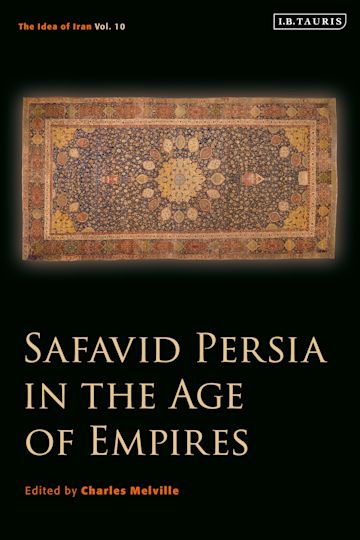
Safavid Persia In The Age Of Empires
Publisher,Bloomsbury Academic
Publication Date,
Format, Paperback
Weight, 1048 g
No. of Pages, 496
Shelf: General Books / Asian Studies / Asian History / Politics
Kindly ask our staff if you cannot locate the shelf.
The sixteenth and seventeenth centuries saw the establishment of the new Safavid regime in Iran. Along with reuniting the Persian lands under one rule, the Safavids initiated the radical transformation of the religious landscape by introducing Imami Shi'ism as the official state faith and in this as in other ways, laying the foundations of Iran's modern identity.
In this book, leading scholars of Iranian history, culture and politics examine the meaning of the idea of Iran in the Safavid period by examining contemporary experiences of both insiders and outsiders, asking how modern scholarship defines the distinctive features of the age.
While sometimes viewed as a period of decline from the high points of classical Persian literature and the visual arts of preceding centuries, the chapters of this book demonstrate that the Safavid era was nevertheless a period of great literary and artistic activity in the realms of both secular and theological endeavour.
With the establishment of comparable polities across western, southern and central Asia at broadly the same time, the book explores some of the literary and political interactions with Iran's Ottoman, Mughal and Uzbek neighbours. As the volume and frequency of European merchants and diplomats visiting Safavid Persia increased, especially in the seventeenth century, and as more Iranians recorded their own travel experiences to surrounding Muslim lands, the Safavid period is the first in which we can document and explore the contours of Iran's place in an expanding world, and gain insights into how Iranians saw themselves and others saw them.
Table of Contents
1. The Body Politic and the Rise of the Safavids - Ali Anooshahr, University of California, Davis, USA
2. The Qazvin Period and the Idea of the Safavids - Gregory Aldous, University of Pittsburgh, Greensburg, USA
3. Man of the Pen, Pillar of the State: Hatem Beg Ordubadi and the Safavid Empire - Colin Mitchell, Dalhousie University, Canada
4. The Idea of Iran in the Safavid Period: Dynastic Pre-eminence and Urban Pride - Rudi Matthee, University of Delaware, USA
5. Safavid Town Planning - Sussan Babaie, The Courtauld Institute of Art, UK
6. From Absolute Prince to Despot: The Political Representations of Safavid Iran in Seventeenth-Century France - Aurélie Salesse-Chabrier, Université de Lyon, France
7. The Idea of Baqer al-Majlesi as 'The Idea of Iran: The Safavid Era' - Andrew J. Newman, University of Edinburgh, UK
8. Practising Philosophy, Imagining Iran in the Safavid Period- Sajjad Rizvi, University of Exeter, UK
9. Popular Religiosity and Vernacular Turkic: A Qezelbash Catechism from Safavid Iran - Ferenc Csirkés, Sabanci University, Turkey
10. 'O Muhibbi! You've Lit Your Lamp with Khosrow's Burning Passion': Persian Poetry as Perceived by Sixteenth-Century Ottoman Authors - Benedek Péri, Eötvös Loránd University, Hungary
11. Commercial Relations between Safavid Persia and Western Europe Willem Floor, Independent scholar
12. 'The World is an Oyster and Iran, the Pearl': Representations of Iran in Safavid Persian Travel Literature - Maryam Ala Amjadi, Independent scholar
13. Local and Transregional Places in the Works of Safavid Men of Letters - Sunil Sharma, Boston University, USA
14. Shi'i Rulers, Safavid Alliance and the Religio-Political Landscape of the Deccan - Roy S. Fischel
15. Safavids and Ozbeks - Florian Schwarz, Austrian Academy of Sciences, Austria
16. The Evolution of the Safavid Policy towards Eastern Georgia - George Sanikidze, Institute of Oriental Studies of the Ilia State University, Tbilisi, Georgia
17. Flora in Safavid Paintings from Shah Tahmasp's Shahnama and Later Works - Sheila R. Canby, Metropolitan Museum of Art, USA
18. The Making of New Art: From the Khazana to its Audience at the Court of Shah Soleyman - Negar Habibi, Geneva

